Board games have surged in popularity over the last few years, and we're thrilled to see plenty of wildlife-themed games amongst them – perfect for connecting with nature if it's just a bit too cold or dark to venture outside, or for encouraging non-naturalist friends and families to connect with nature.
The majority of the games in this article are aimed at players aged ten years or above, and we have a separate article available on wildlife-themed games for children, which includes Butterfly Wings: A Matching Game, Poo Bingo and The Wild Bunch.
If you're looking for more even board games to add to your collection, our sister magazines BBC Good Food, BBC History, BBC Sky At Night and BBC Science Focus have also reviewed appropriately themed games!
These reviews are in order of the games' releases, with the most recent at the top. We have also included the Board Game Geek ratings (marked out of 10, with higher being better rated games) and weights (out of 5, with higher numbers being more complicated) for the games, as this site is one of the most foremost for board game players to discuss and rate games.
Best wildlife-themed board games
Meadow (2021)

- By Klemens Kalicki, illustrated by Karolina Kijak and Katarzyna Fiebiger. Rebel Studio.
- Age 10+, 1-4 players, 60-90 minutes playing time.
- Board Game Geek rating: 7.8, and weight: 2.24
Create your own beautiful meadow with this beautifully illustrated game. On each turn you select a card from the central board to add to your hand, and a place a card from your hand down in front of you to gradually build a meadow ecosystem.
However, cards can only be played if there are suitable symbols on show amongst your played cards, creating a very neat food chain effect – so planning is required. It’s all very well selecting an apex predator from the board that’s worth more points, but it will also require more symbols (and thus more played cards) before it can be added to your meadow.
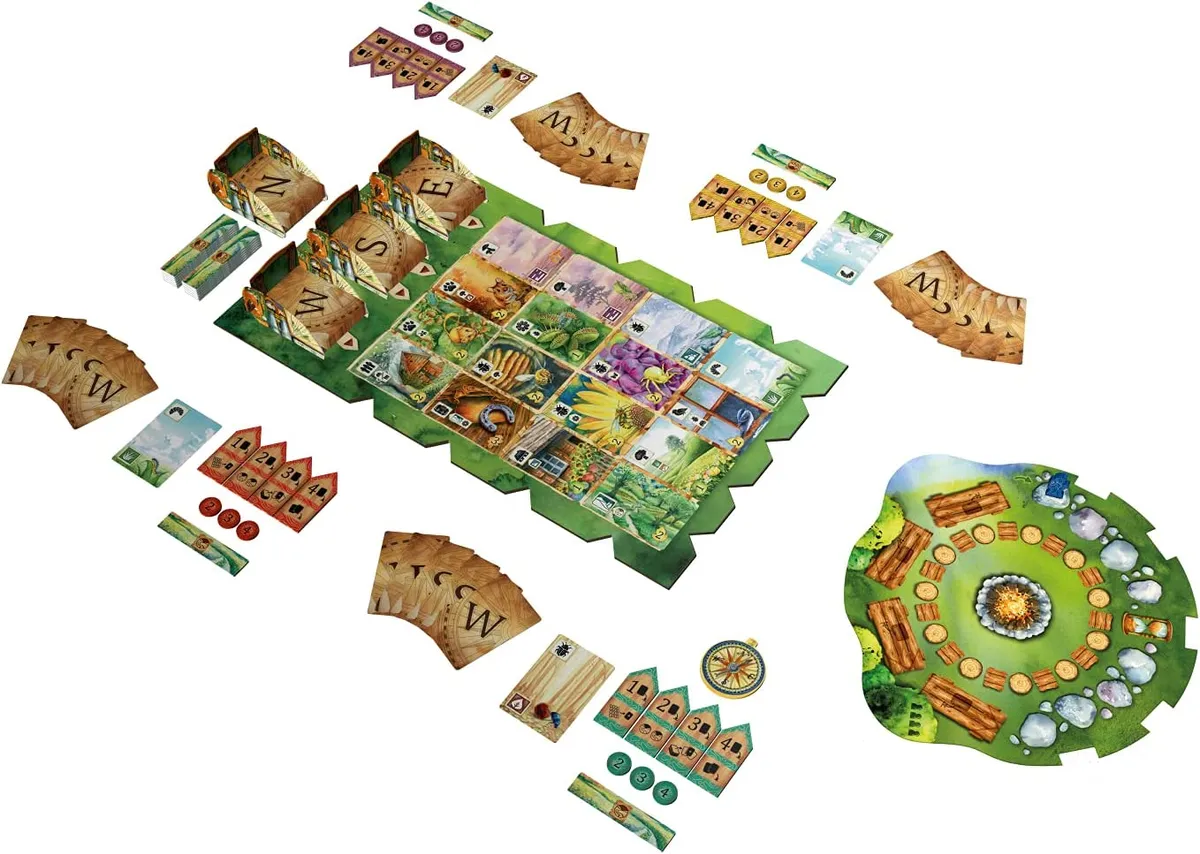
And of course, there are added complications. You must use your markers to choose your cards, and as each round progresses, the spaces get taken up.
Plus, there’s the campfire area. You could use your markers here instead to use the powers at the base of the marker, such as playing two cards from your hand, or picking any card up from the central board. But again, spaces here are limited (and the campfire area changes according to the number of players in order to force the limited availability). Or if you don’t want to pick up a card, you can place your marker on one of the benches to just play a card into your meadow.
The campfire area also serves to mark the progress of the rounds (halfway through the middle deck of cards is swapped out), and where you can gain bonus points for having certain symbols out.
There are some envelopes within the game that add more cards – it’s advised that these are only added at certain points, such as the first day of Spring. This is a really neat way to add a little more content to the game.
An expansion came out in late 2022, which I've not yet played, which is said to add more cards and another board for playing on. I’d be interested to see how much that adds to the game.
I love playing this game, whilst the gameplay and strategy isn’t as deep as some games, I do find it very soothing to play and the illustrated cards are stunning. It’s always a thrill to turn over a new card and see what the species will be.
Although, it can be a little frustrating when a card appears on the board that you really want to pick up and play (an adorable red squirrel for example), but it just doesn’t fit with your plan and you have to sadly leave it in place and look at it longingly!
There’s little interaction with other players, you may take cards that someone else wanted or use a space on the central board or campfire area that they were planning to use, but that’s about it.
Cascadia (2021)
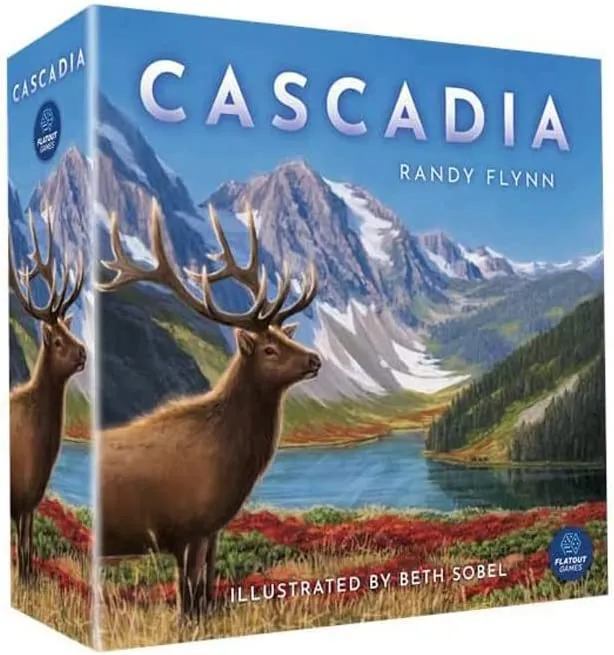
- By Randy Flynn, illustrated by Beth Sobel. Flatout Games.
- Age 10+, 1-4 players, 30-45 minutes playing time.
- Board Game Geek rating: 8.0, and weight: 1.83
Since its release, Cascadia has proved to be a very popular game with board gamers. In the game, you’re located in the Pacific Northwest of North America, building terrain using the hexagonal habitat tiles and filling it with animals with the round wildlife tokens. Five type of animals are featured: foxes, salmon, grizzly bears, elk and hawk.
On each go, you pick a habitat tile and animal tokens from the ones available on the table, join them up to your existing habitat tiles and replace the tiles and tokens so the next person can go.
It’s a nice simple turn, you have to do those actions and only those actions (well, you can use nature tokens to pick up the tile/token combinations, but you still need to do those three basic actions). The key is to picking the right tiles/tokens and placing them efficiently in order to score points. You want to try and link up different habitats, and create animal groups according to the cards in play (and these cards are randomly chosen from a collection at the start of each game).
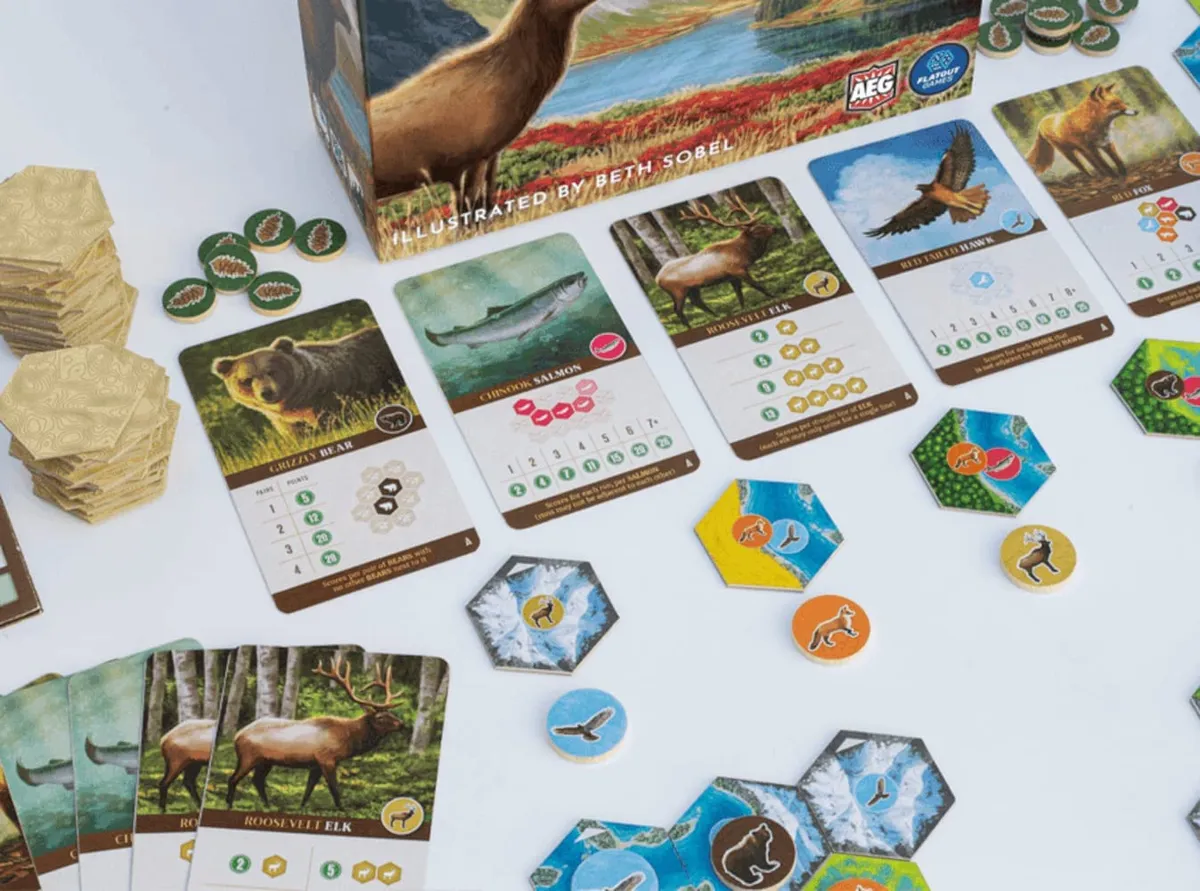
The placing of the habitat tiles and wildlife tokens, and the joining up habitats and earning points according to habitat sizes and groups of animals, reminded me of Calico – another game from Flatout Games, which is not reviewed in this article since it’s about making a quilt and attracting cats to sleep on your quilt (I do have this game in my collection and it’s adorable. Soothing to play but also intensely frustrating when someone takes the tile you want).
However, it’s got more flexibility than Calico – there’s no set board to be restricted by and there’s more tiles/tokens out to choose from. Part of me wonders if I need both games in my collection, but I love the theme of each, so for now, they’re definitely both staying and being enjoyed!
Ark Nova (2021)
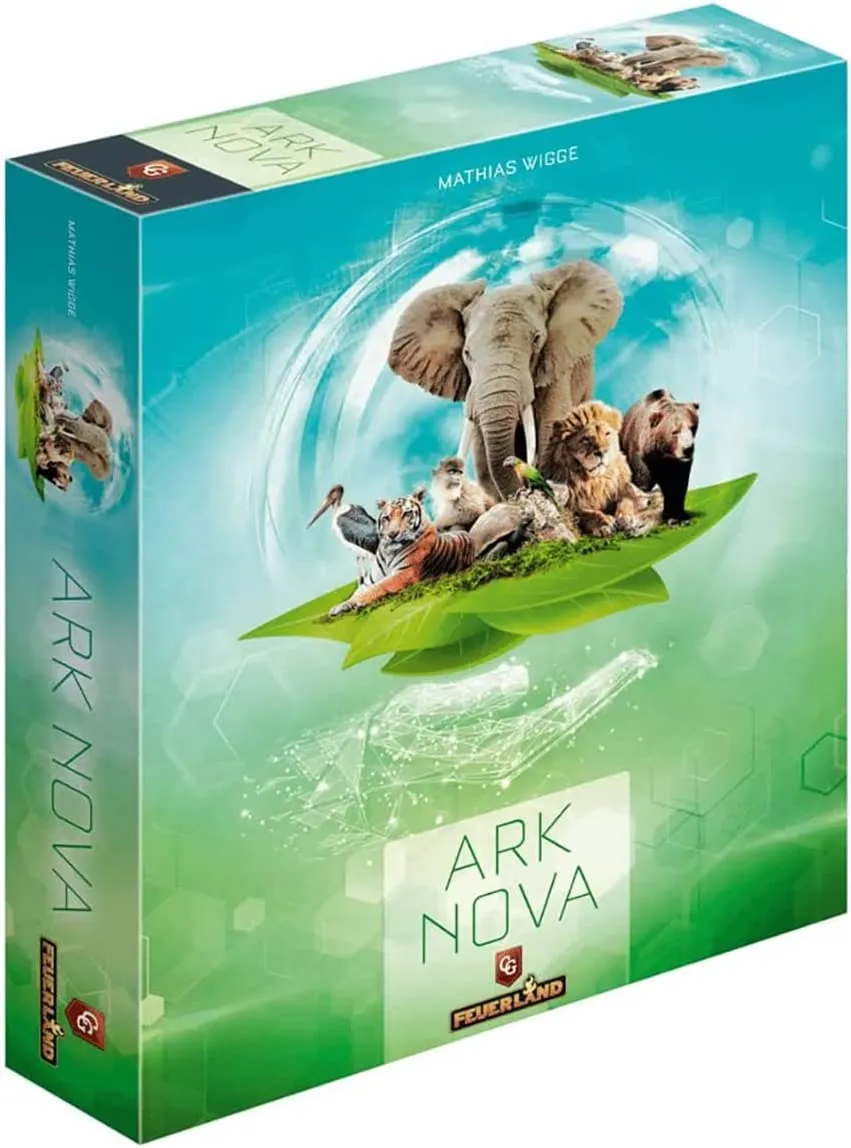
- By Mathias Wigge, illustrated by Steffen Bieker, Loïc Billiau, Dennis Lohausen, Christof Tisch. Feuerland Spiele.
- Age 14+, 1-4 players, 90-150 minutes playing time.
- Board Game Geek rating: 8.5, and weight: 3.71
One of the big breakout games from the last few years – as reflected in its high Board Game Geek rating and the awards that it has won – Ark Nova's focus is on planning and building a zoo that is scientifically managed and supports conservation projects.
Each player has a personal zoo map (pictured below), where they are building and filling enclosure for zoo animals. You’re trying to gain high appeal (more visitors equals more money) but also conservation points. There’s a lot of cards in this game – over 250 in fact, each with a special ability. Some are animals, whilst others are staff members and conservation project.

Common complaints about the game include the fact that you are relying on luck to get the cards you need for your strategy. Whilst this is true in many games, it's harder to mitigate for this factor in Ark Nova. In addition, there's very little interaction with other players most of the time. Now that’s fine for some people, but a vital aspect of playing board games for others.
Although highly ranked, potential buyers should be aware that this is one of the longest (some games have taken over four hours) and most complicated games in this list, and will not be accessible to all board game players – especially those that are new to playing board games.
Zuuli (2021)
- Buy now from Zatu Games (£16.99).
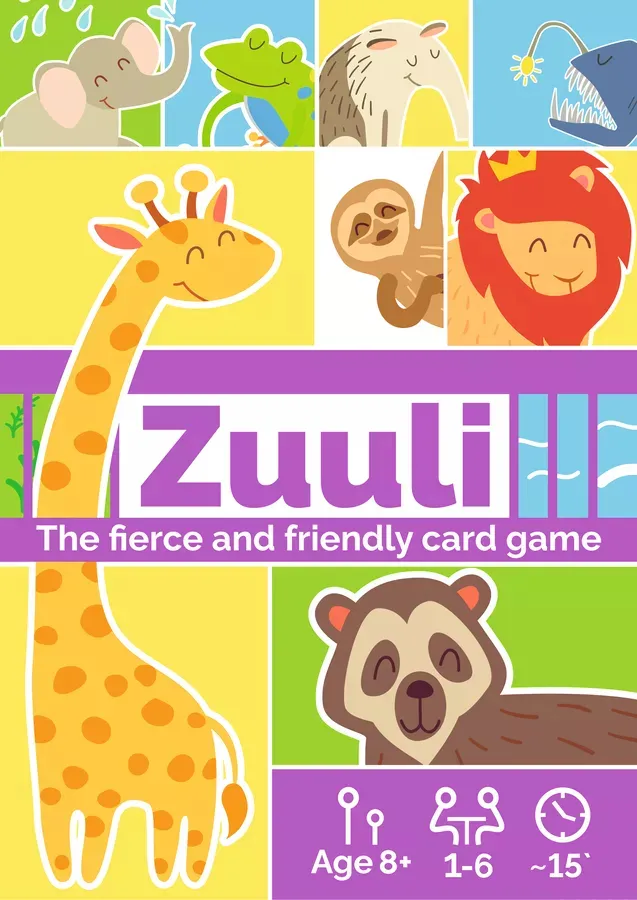
- By Chris Priscott. Unfringed
- Age 8+, 1-6 players, 15 minutes playing time.
- Board Game Geek rating: 7.5, and weight: 1.60
Another game about building a zoo with enclosures and animals? Yes, but this one is very different! Zuuli is a fun, face-paced and cards-only game and is far less complicated than Ark Nova above, its age recommendation is eight years plus and it usually only takes about 15 minutes to play!

The aim of the game is to build enclosures and rescue animals – but you must make sure that you have the right enclosures for your animals, and that appropriate animals are housed together. For example, red pandas prefer to be housed with other red pandas, so you'd score more points for red pandas kept together. Whereas grizzly bears score more points if they are kept alone.
Fly-A-Way (2021)
- Buy now from Zatu Games (£49.99).
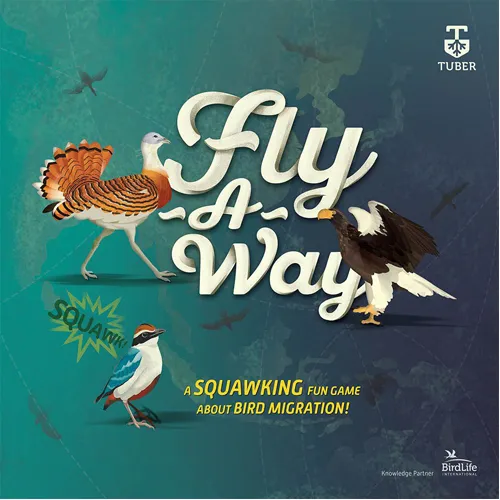
- By Quek Oon Hong, Nguyen Huy Hung, Lynette Lee, Iris Tang, Simon Vincent. Playlogue Creations, Tuber Productions, in partnership with BirdLife International.
- Age 10+, 2-4 players, 45-90 minutes playing time.
- Board Game Geek rating: 6.9, and weight: 2.13
Fly-A-Way is all about the birds, specifically the migratory birds on the East Asian-Australasian Flyway (EAAF). When the game was first announced, straight away there were a lot of comparisons with Wingspan (short review further down this page, and full-length review) – a bird-themed game where there were separate cards for the different birds which have some powers on them, with three types of habitats that birds can live in.
Sure there are those similarities, but the gameplay is very different. In Fly-A-Way, you’re trying to build and connect migratory routes on your map, using link tokens so that birds can safely fly. There are three birds (each with a different route) from the deck out in play in the roosting area, and the person that puts down the final link token that connects one of those three birds’ routes is the person that saves the bird and earns that bird’s points. Any player that contributed link tokens to that route also gains points. When a bird is saved and taken from the roosting area, it is replaced with another bird from the deck.

However, there are threats to be faced and, hopefully, overcome. These come in the Fowl Play! cards, which may be natural predators, urbanisation, exhaustion, window collision, the caged-bird trade, wind turbine collision and so one. Each of these cards has an effect, such as discarding one of the roosting birds or trapping one of the roosting birds, or even discarding one bird that you have already played. Even worse are the Bird-tastrophe cards, which have even worse effects.
Wing It! cards help to mitigate some of the Fowl Play! cards, and can also allow you to play more link tokens in a go.
There are three ways that the game can end: someone saves six birds, someone reaches 100 points, or the deck of Fowl Play! cards has been used up. The winner is the person with the most points.
I really enjoy playing this game, and not just because of the theme (or because I won the first time I played it). As I said, there are some similarities to Wingspan, however the placing of link tokens along a migratory route reminds me of a Ticket To Ride (which I also love). The addition of the Wing It!, Fowl Play! and Bird-tastrophe cards adds a little more complexity and luck. It’s also a good way to teach about the serious issues facing migratory birds. Although it has good replayability, there could perhaps be room to add more bird cards.
I’ve played it with two, three and four players, and found it works well each time. A possible expansion could find a way to create a solo mode.
Snapshot: Wildlife Photographer (2021)
- Buy now from Paper Boat Games (£25.00).
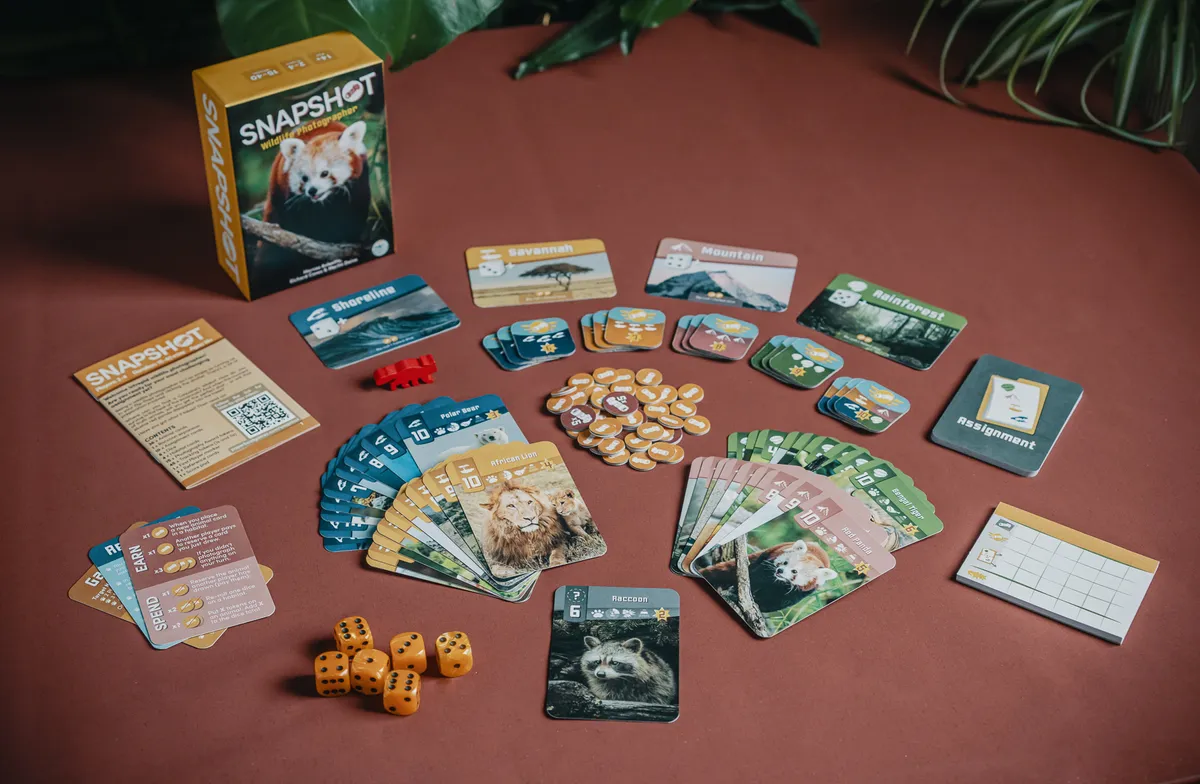
- By Marcos Avlonitis, Richard Caves, Martine Daine. Paper Boat Games.
- Age 7+, 2-4 players (5 with expansion pack), 15-45 minutes playing time.
- Board Game Geek rating: 7.5, and weight: 2.00
I first came across this game at the UK Games Expo – my eye was caught by the large red panda poster, and I was intrigued. Sitting down with one of the designers of the game, I was delighted to find that it was a game about photography for a wildlife magazine. The idea of the game is that you are a wildlife photographer, tasked by Snapshot magazine with tracking down your subjects and photographing them – with some secret assignments!
On your go, you must first undertake research. This involves turning over new animal cards into the different habitat slots – but there’s the chance you may spook all the animals in that habitat! Now that you know which animals are around to photograph, you must prepare and work out which ones you’d like to capture. Ideally you’d like to photograph them all, but you’re limited by the six dice you have available to roll. The rarer the animal, the higher the dice roll required to photograph it successfully.
As well as secret assignments to fulfil, there are also awards available to win, which are also worth points.
All in all, I find this an enjoyable game to play with a nice mix of card collection, dice management and push your luck – so there’s a balance between tactics and luck. The box is quite small, making it easier to take round to friend’s houses or on holiday.
Since it was first released in 2021, the developers have since released a Flora Expansion (£7.50) and a Deluxe Playmat (£20.00). As well as adding plants into the mix, the expansion also adds in a solo mode and allowing expanding the original game to five players.
Snapshot is included in our gift ideas for a wildlife photographer round-up, which also includes chocolate cameras and a camera lens coffee mug.
Mariposas (2020)
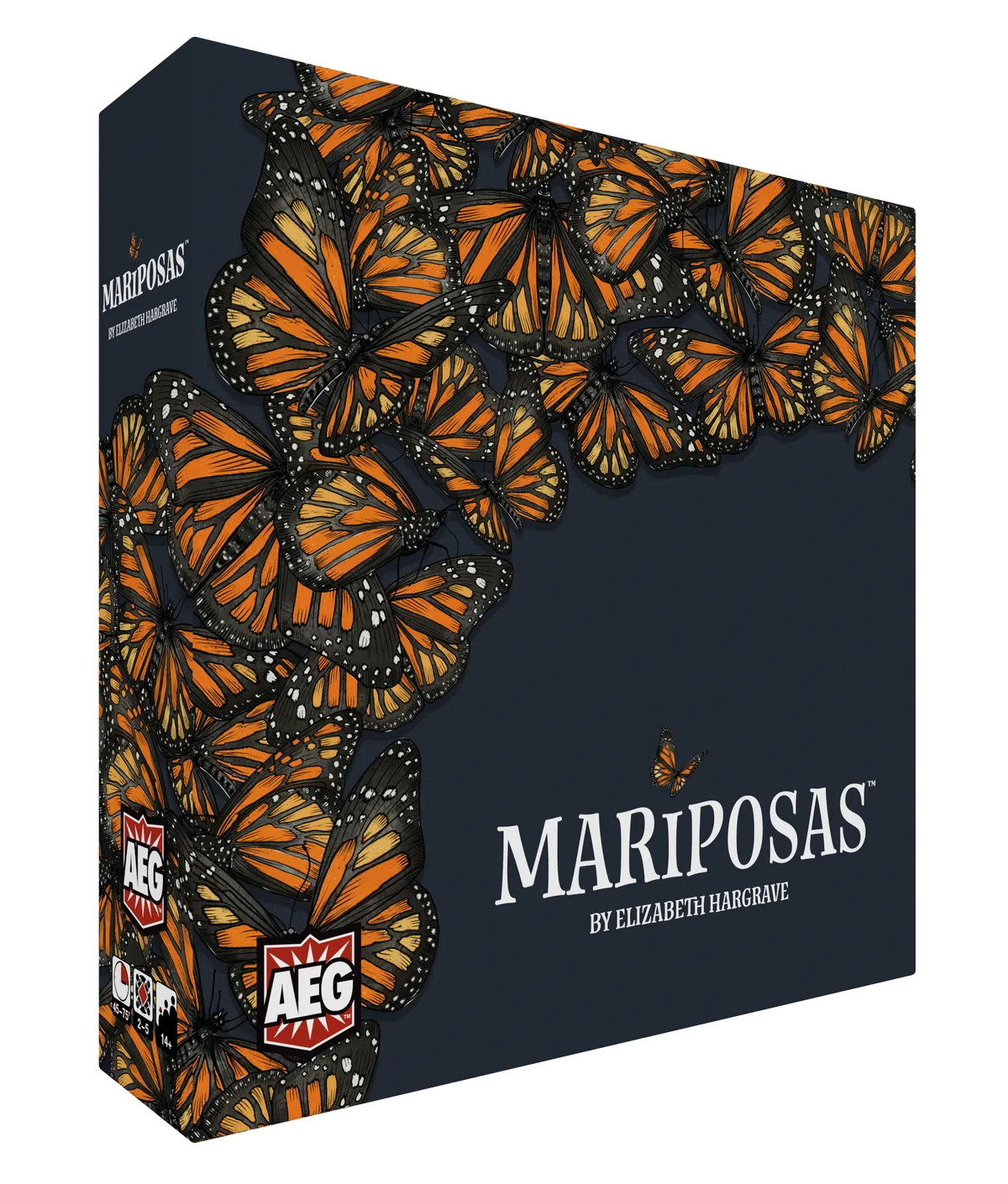
- By Elizabeth Hargrave. Alderac Entertainment Group.
- Age 14+, 2-5 players, 45-75 minutes playing time.
- Board Game Geek rating: 6.9, and weight: 2.19
From award-winning game designer Elizabeth Hargrave comes another excellent wildlife-themed board game. Based again on flying animals, this time the attention is turned away from the birds of her Wingspan game (review below) to the Monarch butterflies, renowned for their multi-generational migration from central Mexico across northern America and back again.
The game is played across three seasons, starting off with spring in Michoacán in Mexico. Players migrate their first generation of butterflies into continental North America, feeding on five types of flowers along the way. Butterflies can hatch when they land next to milkweed and can stop off at cities to collect waystation cards (extra flower tokens, a lifecycle card or a bonus card).

There are additional points to gain at the end of each season, with the summer and autumn goals revealed as the game progresses. However, these can be ignored if it doesn’t fit with your overarching strategy. Importantly, players must remember to return as many of their fourth-generation butterflies as they can to Michoacán before the end of autumn.
Rustling Leaves (2020)

- By Paolo Mori. Illustrated by Elli Jäger. KOSMOS
- Age 8+, 1+ players, 20 minutes playing time.
- Board Game Geek rating: 6.9, and weight: 1.61
This is a sweet and modest little game about wandering through a forest and earning points for the wildlife you see (or don’t see!). It’s a combination of a roll and write game, with a bit of push-your-luck.
When playing, you start at one of the leaves and are then drawing areas onto your sheet based on the dice roll – which have six sides (1x 1 pip, 2x 2, 2x 3, 1x 4), so you can end up with combinations such as 1x1, 1x2, 2x2, and all the way up to 4x4. Once you've drawn your area, you think pick a symbol within that area to strike off and (hopefully) score points with. Each subsequent area must connect to an existing area.
You can score points differently based on which wildlife (or other sights) you’re picking. Do you gamble and try to score all rainbows, which are high scoring but all seven of them must be ticked off in order to score? Or play it safe and tick off the trees, which are lower scoring but appear far more frequently on the sheet?
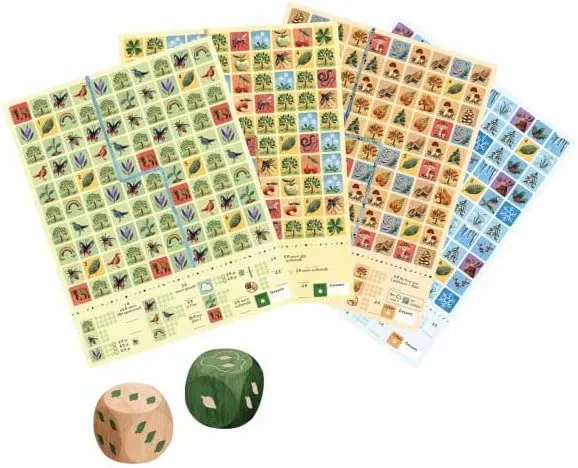
There are also points related to crossing the river, clouds on the dice and avoiding certain squares. The push-your-luck element comes in near the end as your sheet becomes crowded. Do you take the minus points for skipping drawing an area to try and stay in the game and hopefully score big with your sightings? Or duck out and be content with your score?
Each season has different wildlife and ways to score, as well as different rules about whether or not you can cross the river, and any penalties or points for doing so.
The components are basic: a rulebook, a big stack of sheets split into the four seasons and the two dice. The box is big enough to also fit in a couple of small pencils (like the ones that you use in IKEA).
I’ve found that it’s an enjoyable game, and an excellent warm-up or cool-down to a gaming session with a heavier game.
Oceans (2020)
- Buy now from Coiledspring Games

- By Nick Bentley, Dominic Crapuchettes, Ben Goldman, and Brian O'Neill. Northstar Games Studio
- Age 12+, 2-4 players (5-6 with deluxe edition), 60-90 minutes playing time.
- Board Game Geek rating: 7.5, and weight: 2.87
A standalone game to the award-winning Evolution series, the aim of this marine-themed game is to create and evolve marine species in an ever-changing ecosystem, and try to stop them from going extinct. The first half of the game is relatively slow, as you gradually evolve your species using the 12 ‘Surface’ traits available, and feed from the reef to build their populations.
There can be quite a bit of interaction with other players' species, with the ability to passively gain food from neighbouring species when you apply parasitic or shark cleaner traits to your species. If you want to be more aggressive, you can play predatory traits that allow you to attack other species – if they don't have defensive traits to block your attack that is. You'll likely lose some species along the way, and in fact, you may find that it's a handy strategic move.
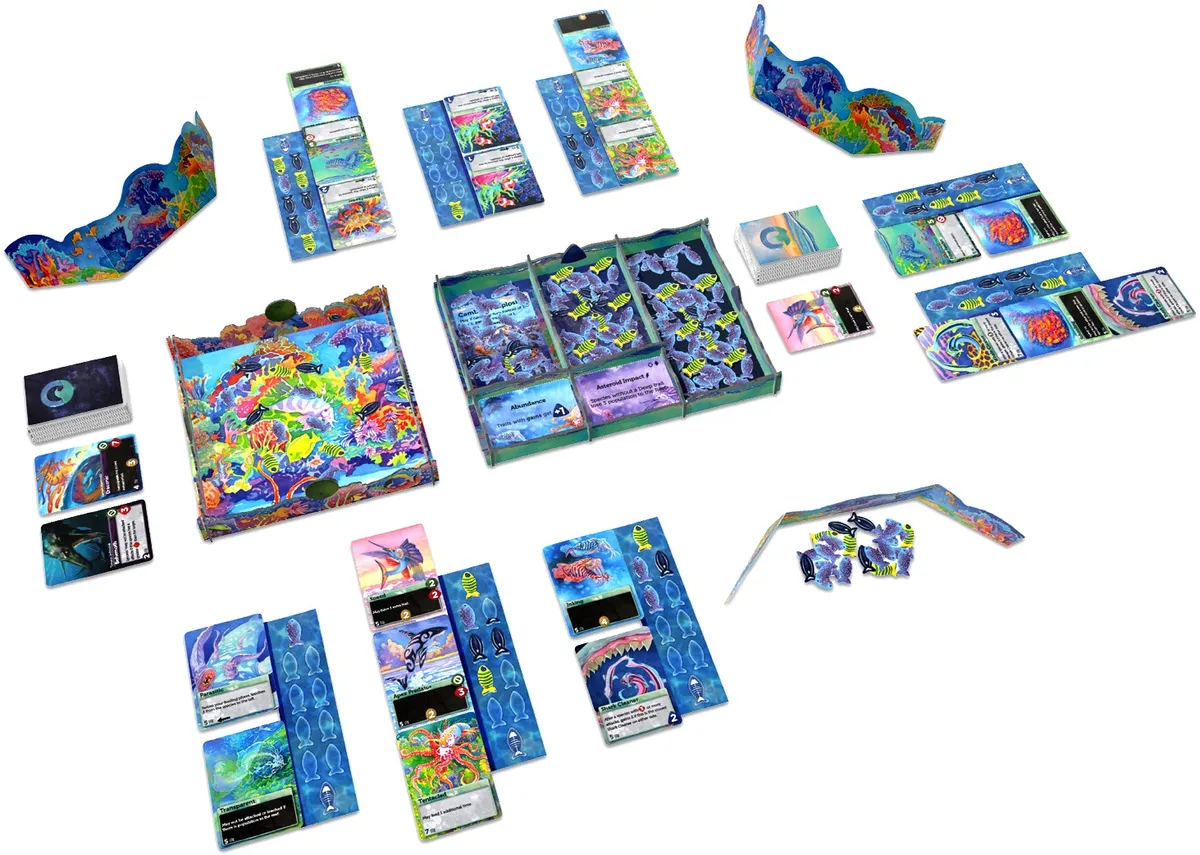
Then the Cambrian explosion occurs, and suddenly everything becomes a lot more extreme, with random scenario cards activating and deactivating (such as asteroid impacts!). After the explosion, players can starting using powerful trait cards from ‘The Deep’, which stray from reality into the world of the unknown, with cards such as ‘Abyss Dweller’, ‘Electric Discharge’ and ‘The Kraken’. Each of ‘The Deep’ 100 cards is unique, so each game will be different.
If the latter half doesn’t appeal to you, the game can be made more family-friendly by playing the Reef variant and avoiding the ‘The Deep’.
There’s also a deluxe edition available, which a 5-6 player expansion, acrylic fish tokens, foiled scenario and ‘The Deep’ cards, card sleeves and food bags.
Aqualin (2020)
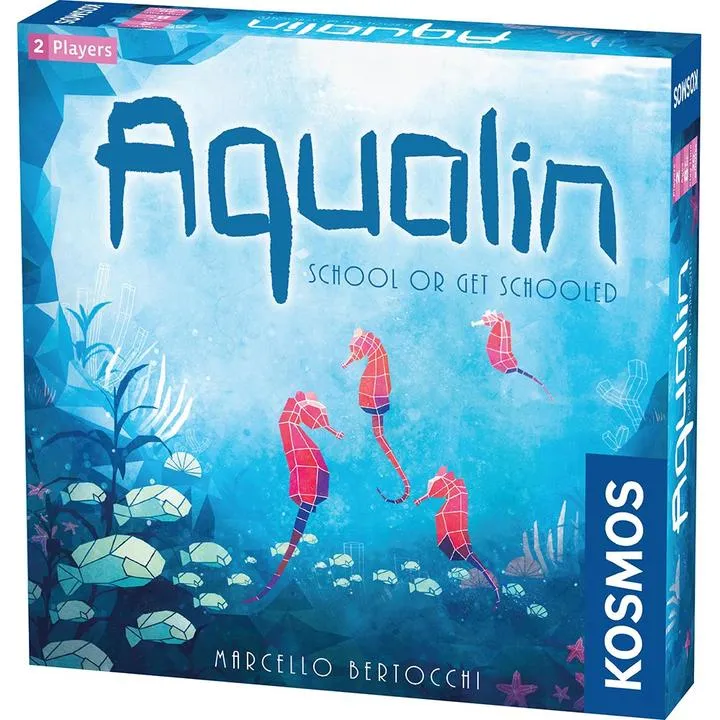
- By Marcello Bertocchi. Illustrated by Sophie Rekasowski. KOSMOS
- Age 10+, 2 players, 20 minutes playing time.
- Board Game Geek rating: 7.0, and weight: 1.65
If The Little Mermaid had played Connect Four using the starfish, crabs and seahorses around her, the resulting game would look a lot like Aqualin.
The boardgame’s concept is relatively simple: two players compete to collect groups of sea creatures by placing tiles in adjacent squares. One is hoping for groups of the same creature, while their opponent tries to arrange the board so that colours are grouped together. But, with every turn, a player is allowed to move one piece already on the board before placing their next tile – a twist that is truly satisfying if you manage to mess up a group your opponent has been plotting for a while.

Aqualin makes for short-but-sweet playing, though I could see how dedicated players could develop their own strategies and starting moves to gain an aquatic advantage.
As someone who is fascinated by the world beneath the waves, I was expecting the ‘get schooled’ by the included pamphlet, but was left wanting more information about the reef and its inhabitants. When I bring this out at my next game night, I’ll need to bring along a copy of BBC Wildlife to quench that thirst!
Reviewed by Amy Arthur, freelance writer
The Lost Words (2020)
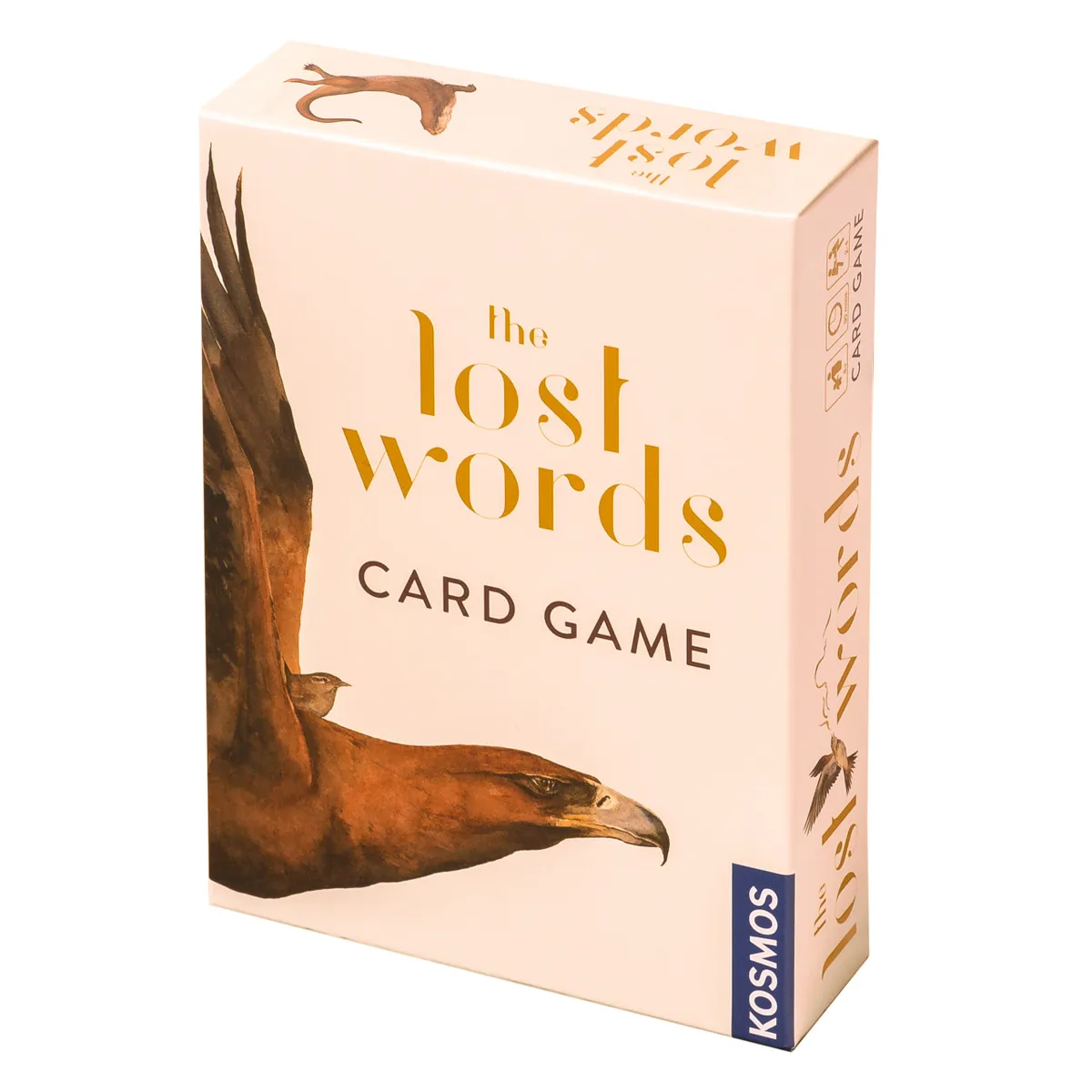
- By Robert Hyde, illustrated by Jackie Morris. Thames and Kosmos
- Age 8+, 2-4 players, 15-30 minutes playing time
- Board Game Geek rating: 5.5, and weight: 1.00
Based on the bestselling book by Robert Macfarlane and Jackie Morris, this is a relatively straightforward card game, the object of which is to be the first to pair the cards in your hand with those on the table.

There’s an edge to proceedings, as certain cards allow you to mess with your opponents – draw a magpie, for example, and you can steal a completed pair. One hand took about 30 minutes, and it was something of a delight to play with such beautiful illustrations of the natural world, and to hear 10- and 12-year-old boys talking about brambles, wrens, otters and larks.
Reviewed by Sarah McPherson, section editor, BBC Wildlife
Wingspan (2019)

- By Elizabeth Hargrave. Illustrated by Natalia Rojas, Ana Maria Martinez Jaramillo, and Beth Sobel. Stonemaier Games.
- Age 10+, 1-5 players, 40-70 minutes playing time.
- Board Game Geek rating: 8.1, and weight: 2.45
Wingspan landed on the board gaming scene in 2019 and was soon picking up awards left, right and centre. It has since encouraged scores of board game players to discover the joy of birdwatching, and introduced many birdwatchers to the thrill of board games.
The premise of the game is to attract birds to your nature reserve, where they will feed and lay eggs – and in doing so, activating ‘powers’ which tie in nicely to their real-world behaviour and ecology.
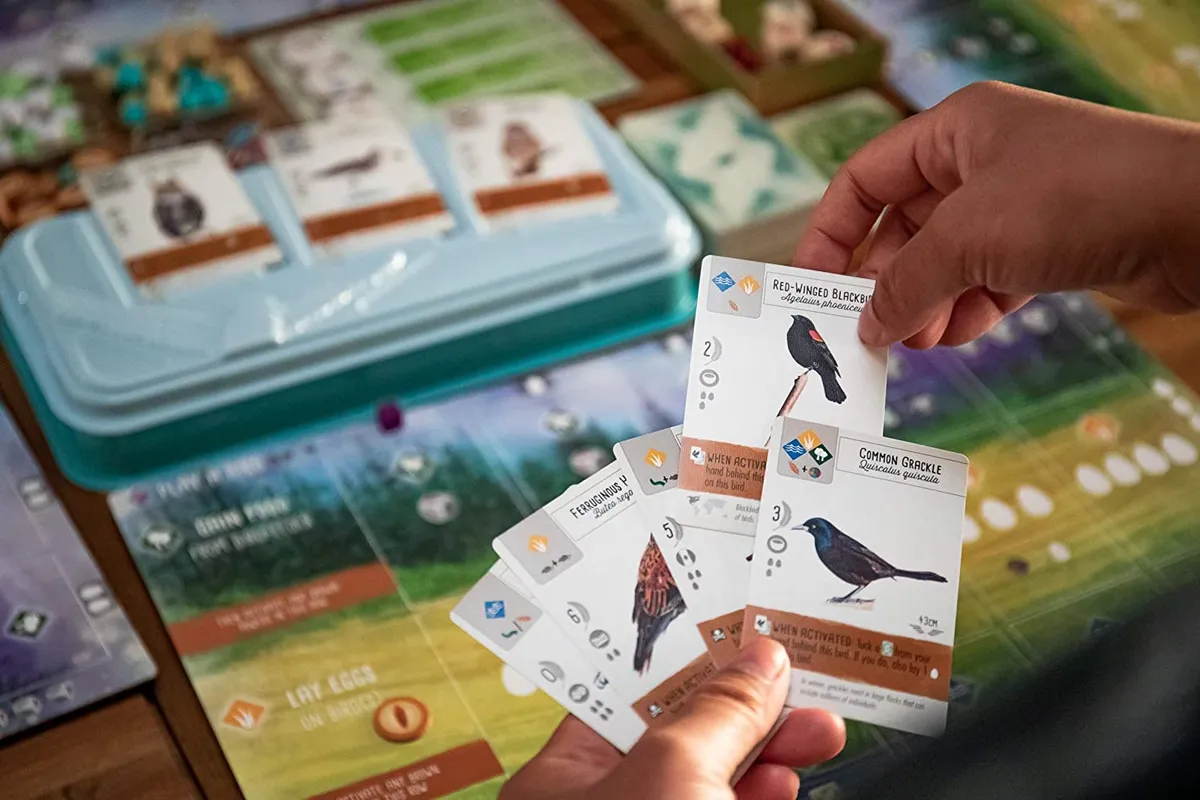
The popularity of the game has meant that’s it has been swiftly followed by three published expansions – European, Oceania, and Asia – with more planned for the future, as well as a large storage box to store the original game components and the expansions' components, called The Nesting Box.
Read our detailed review of Wingspan.
Ecos: First Continent (2019)

- By John D. Clair. Illustrated by Sabrina Miarmon. Alderac Entertainment Group.
- Age 14+, 2-6 players, 45-75 minutes playing time.
- Board Game Geek rating: 7.2, and weight: 2.59
The planet is yours to play with here! In this board game, the players are affecting the formation of the planet and the species populating different landscapes and habitats – but each person is working towards their own objectives.
Unlike in many other games, the gameplay in Ecos: First Continent is simultaneous. As one person (named the Harbinger) draws and reveals an element token from the element bag, every player works on their tableau of cards before them. The cards have different elements required in order to be fulfilled, with some much easier than others, and result in different effects – you may have cards that add mountains or plant trees, move orca (and thus eat some prey animals) or storks, and some contribute towards your victory points.
The game begins to end when a player reaches 80 victory points. After which, elements continue to be drawn out of the bag until the Wild element token is drawn and the game ends immediately.
Ishtar: Gardens of Babylon (2019)

- By Bruno Cathala. IELLO.
- Age 14+, 2-4 players, 45 minutes playing time.
- Board Game Geek rating: 7.0, and weight: 2.24
In this game from award-winning designer Bruno Cathala, players compete to grow the best flower gardens within the desert and create the legendary Lost Hanging Gardens of Babylon for the queen.
Vegetation tiles come in three configurations and must be carefully placed on the board, using the waters from the sparsely located fountains to grow the gardens. Turn grass tiles into flower spaces and join them up to create beautiful flower beds, tended to by assistant gardeners.
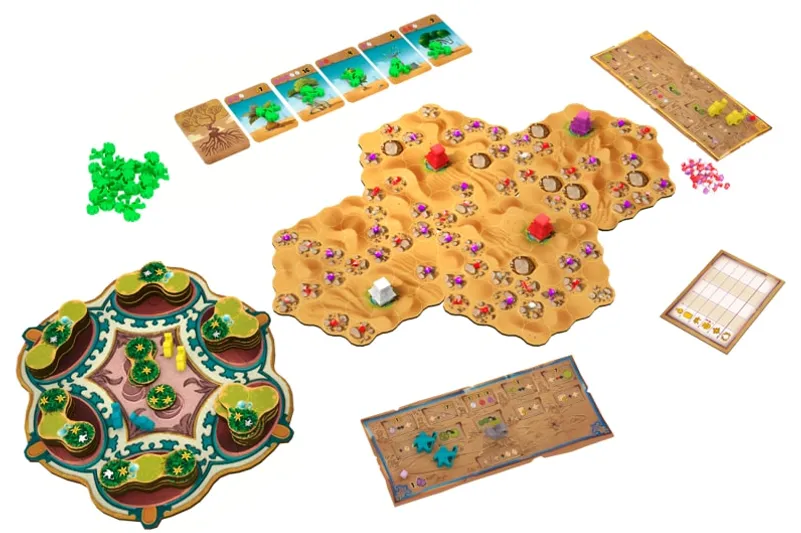
Precious gems are available to collect as the desert spaces are transformed, worth varying amounts of points according to colour. These gems can be used to move on from the available vegetation tiles to preferred shapes, to buy trees for the gardens or to upgrade the skills of the gardening assistants, all of which can help with increasing the final tally of victory points.
Players must avoid their gardens joining up, so what starts as peaceful tending of the soil quickly leads to jostling for space on the board, competition for gems, and control of the fountains and flowerbeds. The sparkly gems and meeples (assistants, trees and a watering can) are a nice touch and satisfying to use. With different point-scoring strategies to pursue, this game can be easily replayed, but isn't overly complex.
Monopoly – RSPB edition (2019)
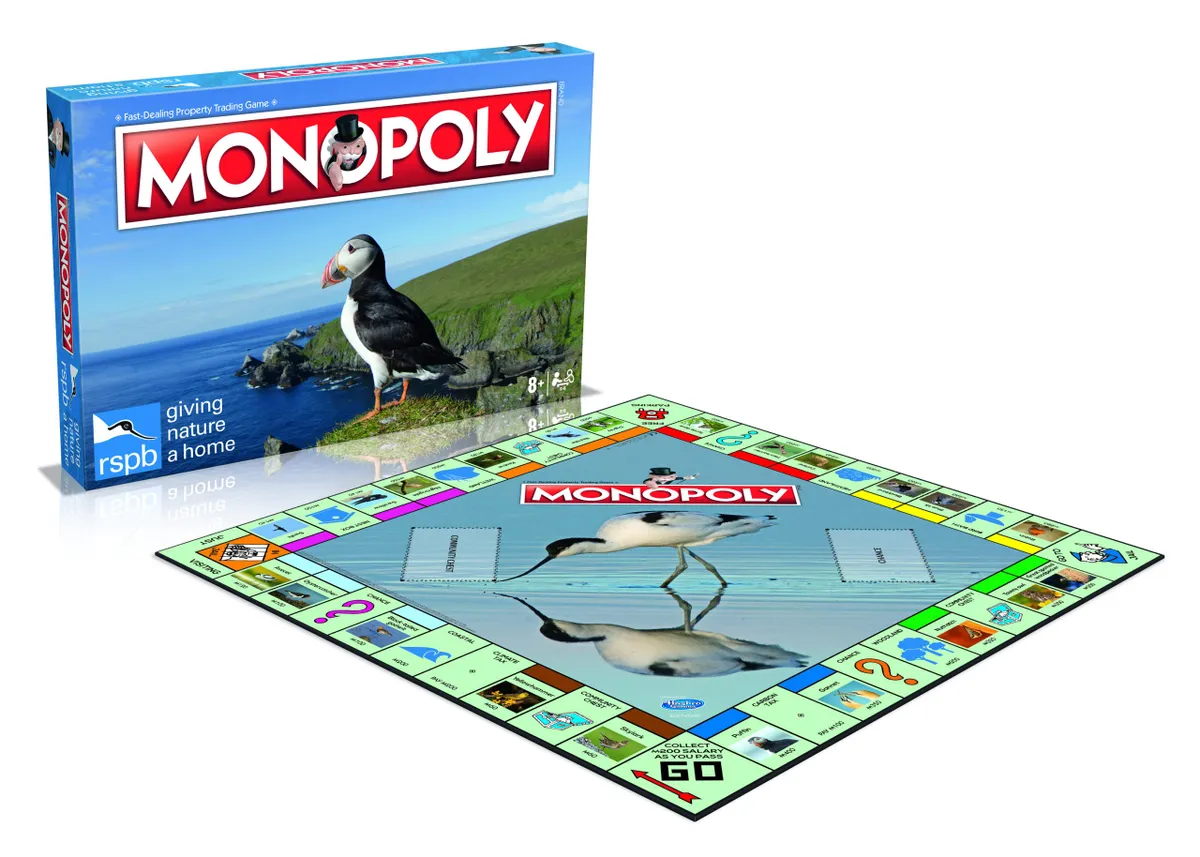
- Age 8+, 2-6 players.
I hardly ever win at Monopoly, so this bird-watching themed version instantly endeared itself to me when I triumphed over an avid player (who, unsurprisingly, was less enamoured with the format).
Instead of the traditional London locations, avian species – from gannet and puffin to nuthatch and skylark – and their habitats are accrued as you make your way around the board. Instead of houses and hotels, hides and visitor centres can be constructed to draw more money away from your opponents.
Community Chest cards may see you parting with your hard-earned cash for binocular repairs or reward you for winning second prize in a wildlife photography competition, for example.
While the theme could, perhaps, work a little harder in some areas, it’s a great way to introduce younger players to a variety of species.
Reviewed by Angharad Moran, former production editor, BBC Wildlife
Cryptid (2018)

- By Hal Duncan, Ruth Veevers. Illustrated by Kwanchai Moriya. Osprey Games.
- Age 10+, 3-5 players, 30-50 minutes playing time.
- Board Game Geek rating: 7.5, and weight: 2.24
Aband of crytozoologists have come together to find the Cryptid, an elusive creature that has never been found. Each player has a clue as to where the species could be on the map, such as in certain types of habitat, but players don't know each other's clues.
On their turn, a player has two options. They can 'Guess' and directly ask another player whether the Cryptid could be in a certain space, to which the other player must answer truthfully and place a block (cube for 'no' or circle for 'maybe') on that space. If a cube is placed, the player whose turn it is must also place a cube onto the board in another space and must also tell the truth.
Alternatively a player can 'Search' a space they think the Cryptid could be, whereupon each player must put down a block until a cube is put down. The first person to 'Search' a space and correctly guess where the Cryptid is located is the winner.
Sounds easy, but players need to find out the clues that their opponents have, without giving too much information away about their own clue. And typically, what happens is that as information is gathered and clues are guessed, a newly placed block will throw everything into confusion.
Two layers of difficulty are available, the one described above, and another version where inverse clues are also provided (i.e. the species is not found in set habitats), thus doubling the number of clues available and to try to work out.
Bärenpark (2017)
- Buy now from Zatu Games (£36.99).
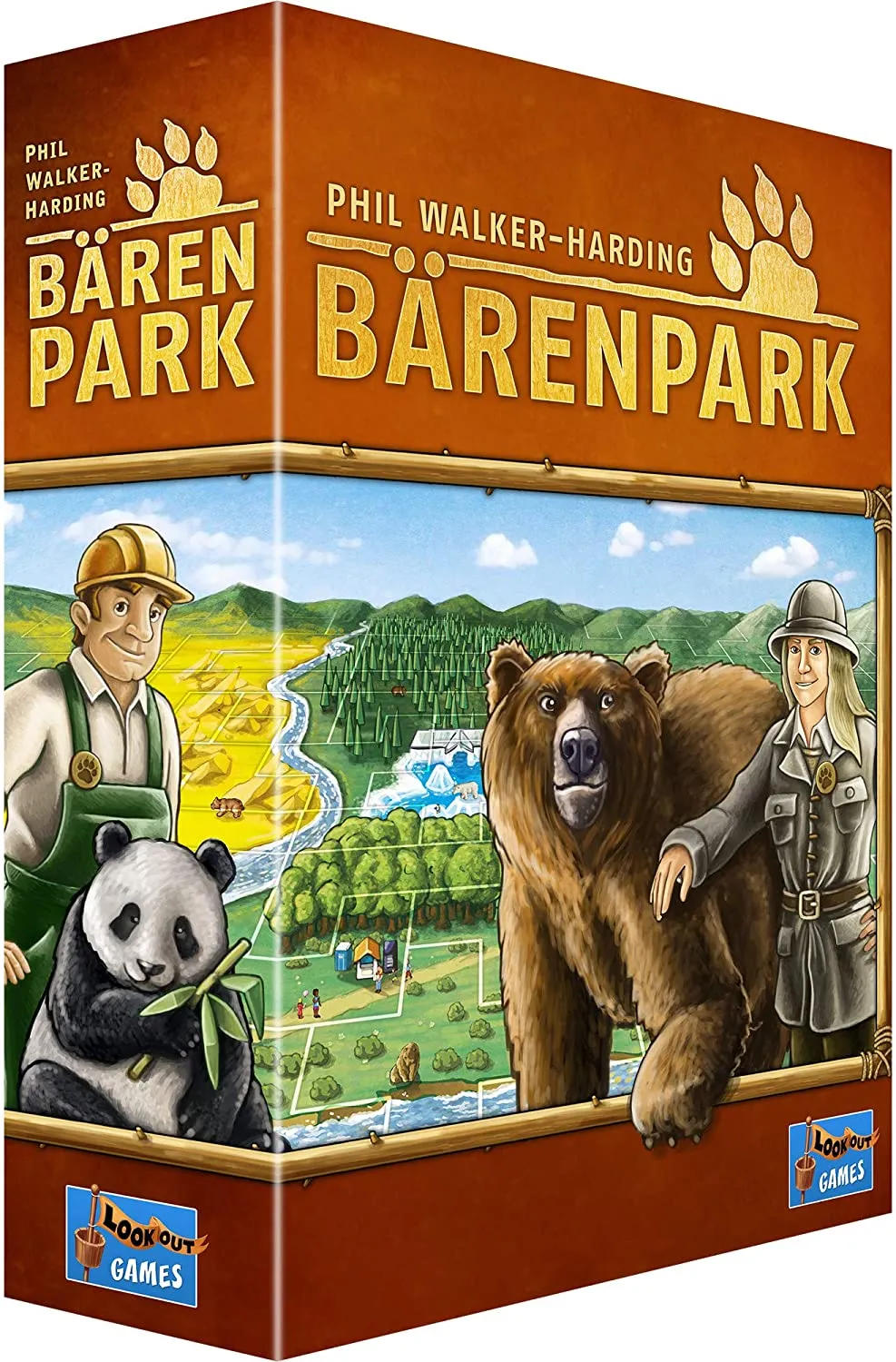
- By Phil Walker-Harding, illustrated by Klemens Franz. Lookout Games.
- Age 8+, 2-4 players, 30-45 minutes playing time.
- Board Game Geek rating: 7.3, and weight: 1.65
Can you build the best bear park? In this game, players compete to build their parks and fill them with bears such as polar bears, brown bears and pandas, plus facilities for your guests – play areas, toilets, food stalls and pretty rivers to look at. The tiles come in a variety of shapes to place onto your building area, you start with just one of the latter, and must lay tiles over certain squares in order to expand.

There isn't much player interaction in this game, you're competing to finish your park first and to lay down the highest scoring tiles (both for bear enclosures and bear statues) – so if someone nabs a specific tile you're after, it can be a little frustrating, especially if it's the only tile of that shape. But overall, you're focused on putting down your tiles, which is satisfying in itself, particularly if you can get it just right!
The game isn't too heavy (both literally and in terms of gameplay), which means that once you've got the hang of the rules, it's a nice game for when you don't want to be battling with too many rules and strategies. I like to play it as a light appetiser or dessert to playing a more complex game.
There are objective card that you can add in for additional complexity, and an expansion has been released which allows you to add more objectives, add a new type of bear (grizzly bear), and to add a monorail to your park for your visitors to enjoy (I've not played with the expansion but this monorail sounds completely adorable).
Photosynthesis (2017)
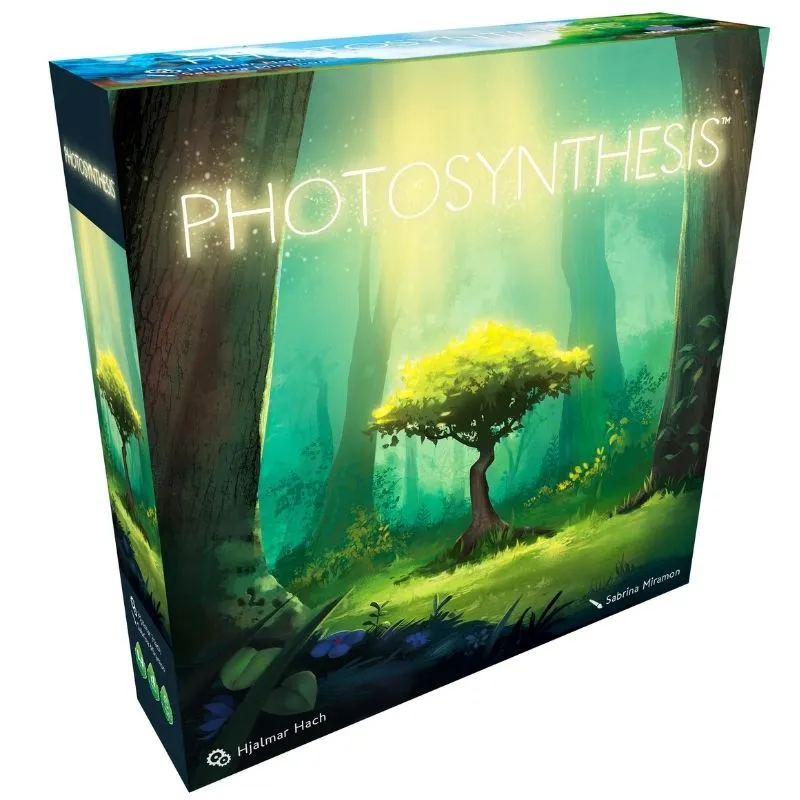
- By Hjalmar Hach. Illustrated by Sabrina Miramon. Blue Orange Games.
- Age 10+, 2-4 players, 30-60 minutes playing time.
- Board Game Geek rating: 7.0, and weight: 2.26
The aim of Photosynthesis is simple, to grow trees using sunlight. The sun travels around the board (with three or four full rotations per game), and the bigger your tree, the more light points it collects. When one of your trees completes its lifecycle, you gain additional points. However, you may find that your seedling or tree is overshadowed by another tree and unable to photosynthesise and collect light points, which provides an additional competitive element to the game.
There’s a number of trade-offs to be thought of whilst playing, including when to spend your accumulated light points on growing your trees or sowing seeds, and even when you want to complete a tree’s lifecycle. Timing is key, as the longer a mature tree stays on the board, the more light points it accumulates, and it may be overshadowing other player’s trees. At the same time, location is also an important factor as the board is split into four sections, with the middle board spaces scoring higher when your trees complete a cycle there. As trees mature in a section, the number of points available to gain in that section decrease.
Each player has their own type of tree (and associated seeds), which are different colours and shapes to help tell them apart on the board. As with anything requiring assembling, it's good fun to pop the cardboard parts out and put them together.
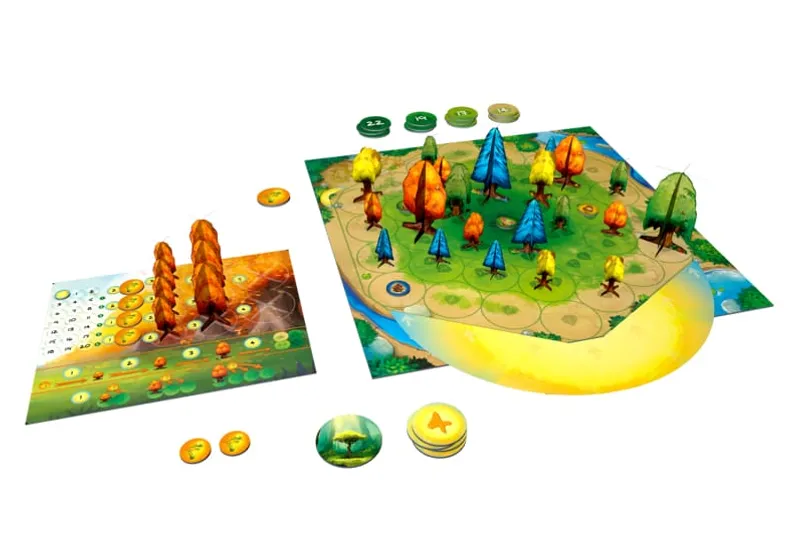
Photosynthesis has one expansion, Under The Moonlight (£15.64), which was released in UK in spring 2021. This enhances the base game with the addition of a moon, the Great Elder Tree, moonstones and the ability to collect lunar points for your forest animal (each of which has a special power). This will inevitably mix things up a bit when it comes to planning your strategy.
Indian Summer (2017)
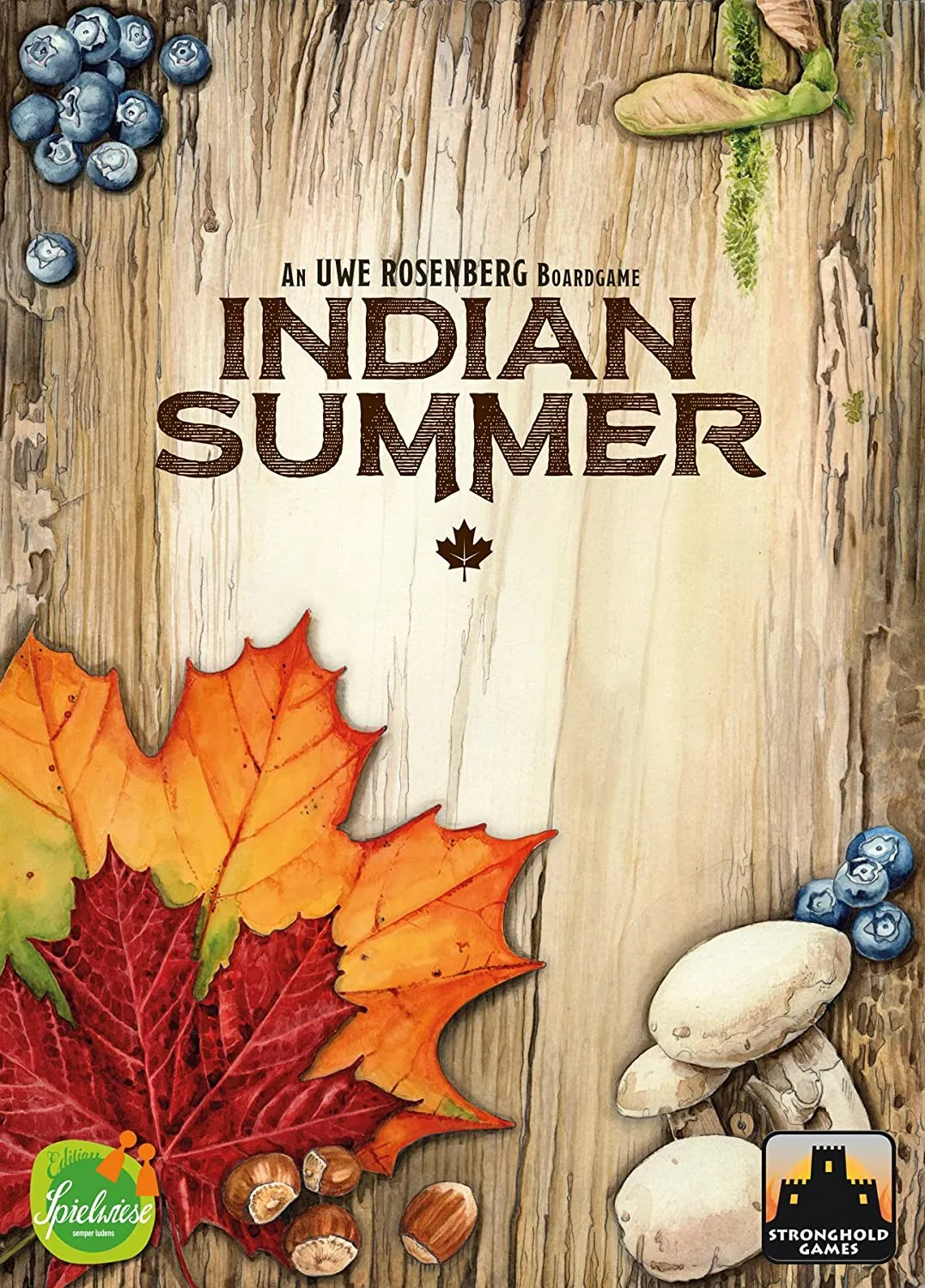
- By Uwe Rosenberg. Stronghold Games.
- Age 10+, 1-4 players, 15-60 minutes playing time.
- Board Game Geek rating: 6.8, and weight: 2.15
Designer Uwe Rosenberg is a big name in modern board games, known for some of the most popular strategic titles available. In Indian Summer, considered the most complex in his trilogy of tile placement games, players compete to cover their forest floors in tetris-like blocks of colourful leaves.

The race gets more interesting as you uncover treasures such as berries and mushrooms that tweak the rules. On the downside, the pieces are fiddly for less dextrous players, and it requires plenty of brain power – especially once the animal tiles come into play. Overall, the autumnal artwork makes this a spectacular option for fans of strategy games.
The other two games in Rosenberg's trilogy are Cottage Garden (Amazon), and Spring Meadow (Amazon).
Reviewed by Ella Davies, nature writer
Unstable Unicorns (2017)

- By Ramy Badie.
- Age 14+, 2-8 players, 30-45 minutes playing time.
- Board Game Geek rating: 6.2, and weight: 1.53
One of the most backed games on Kickstarter's history, the aim of Unstable Unicorns is to build an army of unicorns in your Stable, starting with an adorable baby one. The winner is the first person to reach seven unicorns, which sounds simple but it is far from it. Some of the unicorns are destructive, and help you destroy unicorns in your opponents' Stable, or vice versa. Sadly even the baby unicorns aren't safe from such cruel actions, although they do get returned to the Nursery rather than be killed off, which is a relief.
Magical unicorns with special powers, as all as upgrade and downgrade cards, allow you to protect your unicorns, collect ones from the discarded pile, and effect how your opponents can play unicorns. The addition of 'Neigh' cards (and even a 'Super Neigh' card) provides another layer of fun – or frustration, if they are played against you – as they allow you to prevent your opponents playing cards.

As wildlife lovers, we were thrilled by the inclusion of narwhals and even a rhino – real life unicorns!
Multiple versions and expansions have been released in the years since the games original publication: the Unicorns of Legend expansion, the Dragon expansion, the Rainbow Apocalypse expansion, Adventure expansion, a NSFW (Not Safe For Work) version, plus a travel-sized version with only 82 cards (compared to 135 in the original).
Squirrel Rush (2016)
- Buy now from Amazon
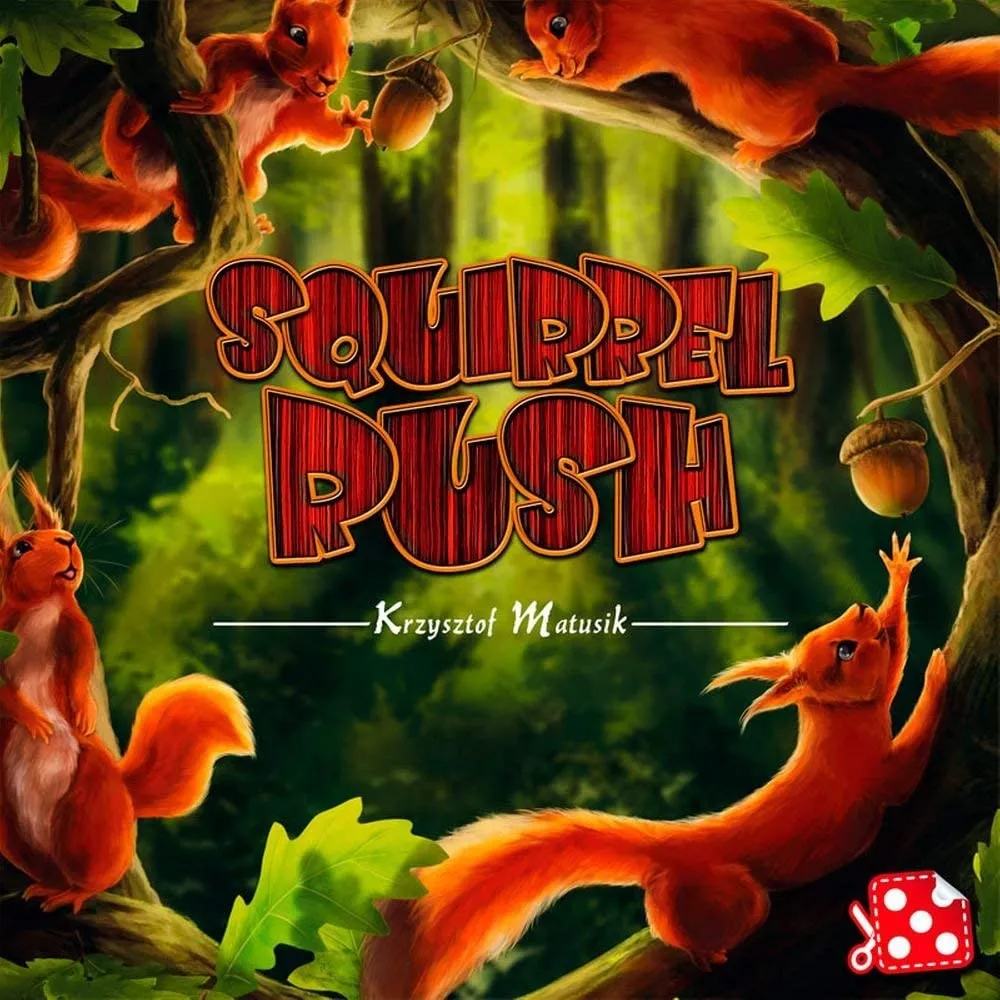
- By Krzysztof Matusik. Tailor Games.
- Age 6+, 2-6 players, 15-30 minutes playing time.
- Board Game Geek rating: 6.3, and weight: 1.75
Squirrel Rush is a tile placement game that casts you as competitive squirrels, trying to collect as many nuts as possible before winter arrives. The game is simple to set up and quick to play but gets tactical as you choose the best path through the glade for the maximum haul of acorns.
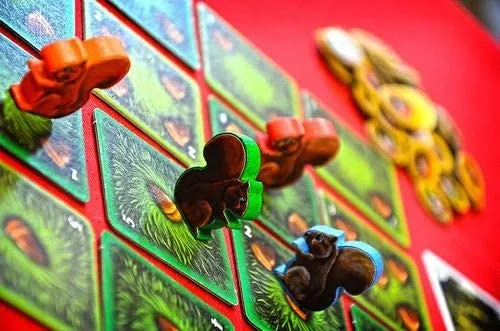
It’s a fun family game, the wooden squirrel player pieces are satisfyingly tactile, and the cards feature adorable illustrations of red squirrels in action. Consider adding a copy to your cache if you’re a fan of logic puzzles, need a ‘filler’ between more involved games, or you’re catering for shorter attention spans.
Reviewed by Ella Davies, nature writer
Arboretum (2015)
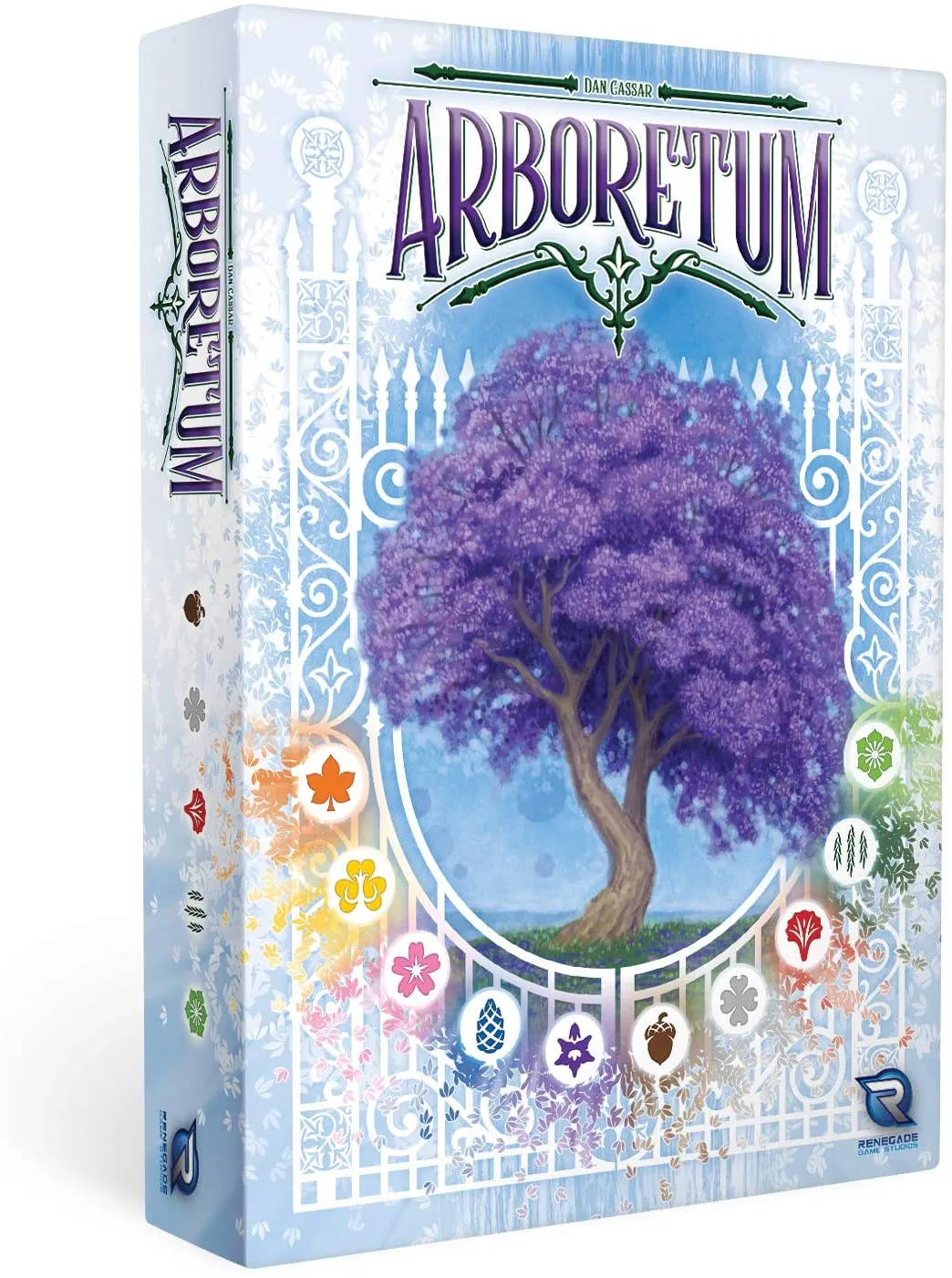
- By Dan Cassar. Renegade Games Studio.
- Age 8+, 2-4 players, 30 minutes playing time.
- Board Game Geek rating: 7.3, and weight: 2.15
If you dream of planting trees, you might be attracted by the prospect of Arboretum, a card game for 2-4 players that requires you to plot a path through a beautiful collection of your own creation. In truth, it’s not suited to dreamers, as things quickly become very competitive and players eventually wipe out each other’s arboricultural efforts.

While the cards can teach you about the shapes and shades of some of the world’s most flamboyant tree species, the game overall feels like a slightly harsh lesson on how to read your opponents. That said, it’s ideal for analytical thinkers, particularly when played head-to-head.
Reviewed by Ella Davies, nature writer
Birds of a Feather (2015)
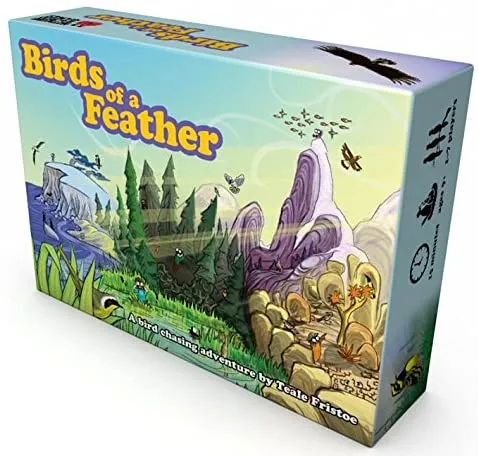
- By Teale Fristoe. Nothing Sacred Games.
- Age 9+, 1-7 players, 15 minutes playing time.
- Board Game Geek rating: 6.7, and weight: 1.23
You don’t have to know much about US bird species to play Birds of a Feather, though you might pick up a few facts from the game. Playing as a twitcher, you manage your hand of cards to tick off as many species as possible, earning extra points for full groups from differing habitats including wetlands, deserts and mountains.
It’s a great game for getaways, packed in a neat little box and with beautifully clear artwork sure to cheer up any rainy days. It’s also quick to play, suitable for all ages and can be played solo - but is best in bigger groups of up to seven.
Reviewed by Ella Davies, nature writer
Evolution (2014)

- By Dominic Crapuchettes, Dmitry Knorre and Sergey Machin. Illustrated by JJ Ariosa, Giorgio De Michele, Catherine Hamilton, Kurt Miller, Jacoby O'Connor. Northstar Game Studio
- Age 12+, 2-6 players, 60 minutes playing time.
- Board Game Geek rating: 7.1, and weight: 2.43
Can you create hardy wildlife that will adapt, evolve and survive whatever this game throws at them? This is a card-based game where you create animal species, and evolve them with up to three trait cards. These cards cover a range of traits such as growing a longer neck or horns, or turning them into a carnivore.
You're trying to keep your species alive and well-fed, with some traits enabling your species to be the first to feed, or to take extra food, or to attack other species if it's a carnivorous species. If a species fails to fed, that the population starts to decrease, as members of the species starve and die. If it goes really badly, you might end up losing your species altogether.
Hive (2000)
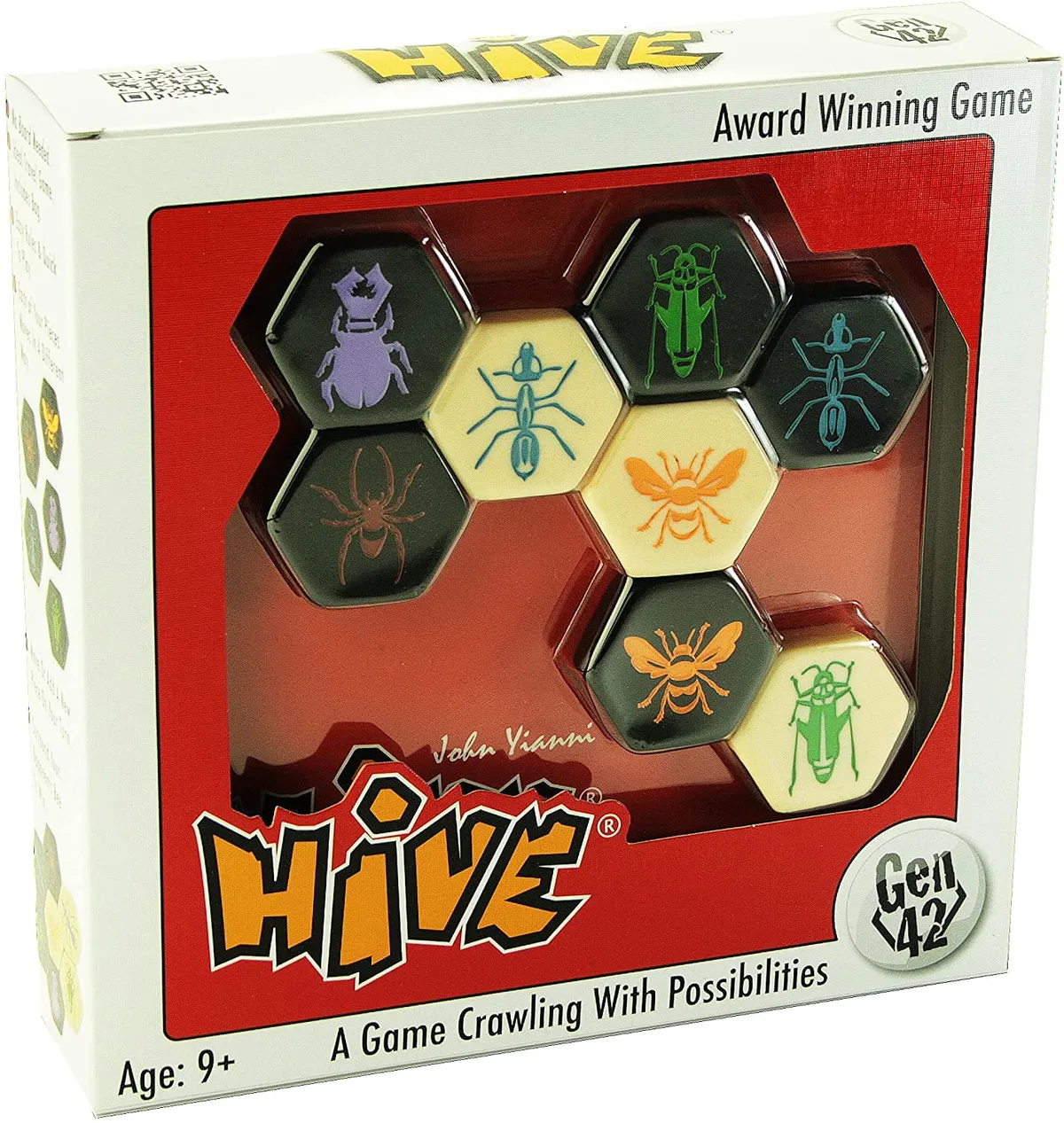
- By John Yianni. Gen42 Games.
- Age 9+, 2 players, 45-75 minutes playing time.
- Board Game Geek rating: 7.3, and weight: 2.32
This abstract game involves 22 different hexagonal tiles being placed and moved, each engraved with an animal motif. Like chess, there are black and white tiles (11 of each), and the different characters can move in different ways . And also like in chess, the aim is to capture a specific piece – in this game, you're aiming to surround the queen bee on all six sides.
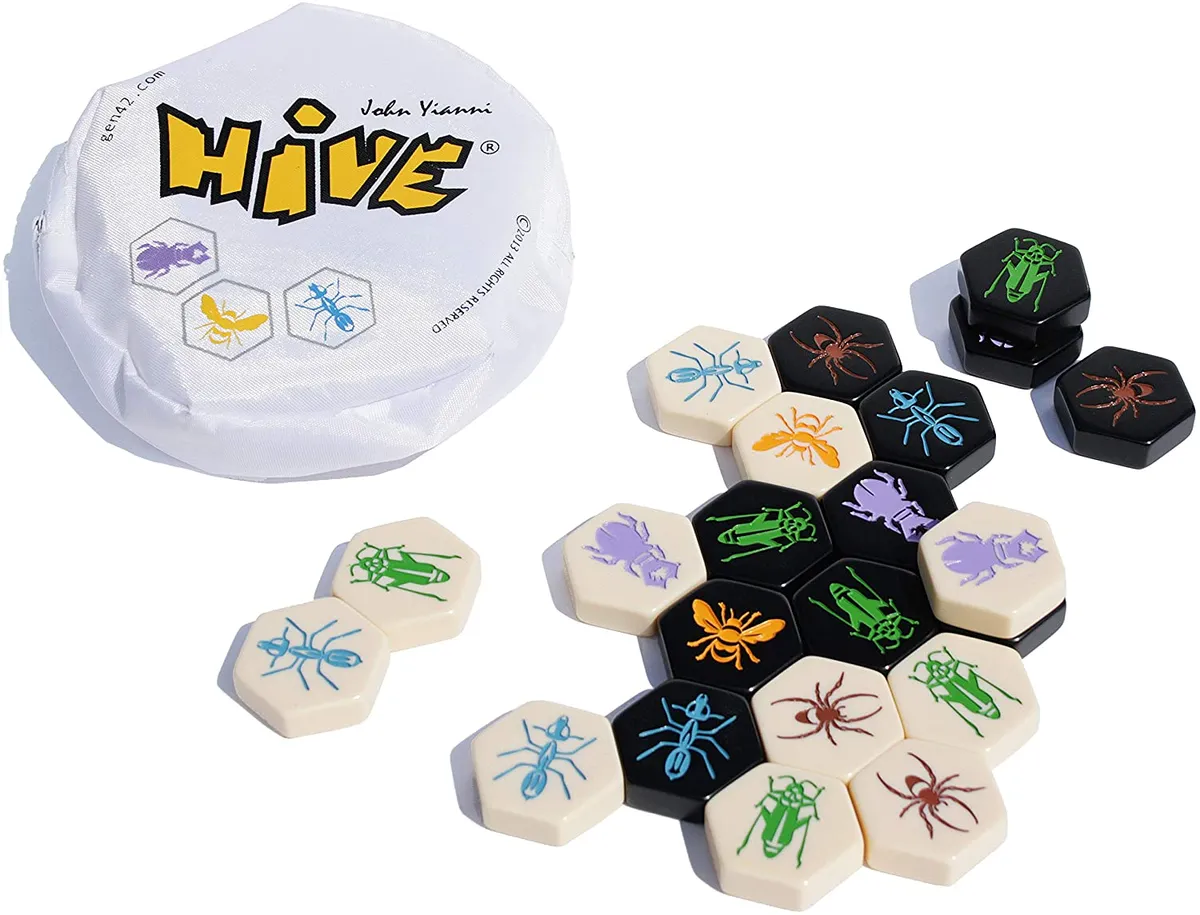
It's a neat little game, that requires no set up of the board – the game starts as soon as the first tile is placed down. As well as the movement rules for each type of animal tile, there are a number of other rules in place which you must bear in mind. Once you’ve played the game a couple of times, it become easier to hold all the rules in your head.
The game comes with a travel bag, meaning that you don't need to lug the board game box around with you – ideal if you want to take it camping or the like.
Additional tile pieces have been released, each with their own movement abilities, and there’s also two alternative editions available: the black and white Hive Carbon (£24.95) and the smaller Hive Pocket (£16.95) – both come with the ladybug and mosquito tiles (and the pillbug is available to buy for both versions as well).
Read our detailed review of Hive.
Main image: Friends playing a board game. © Getty
